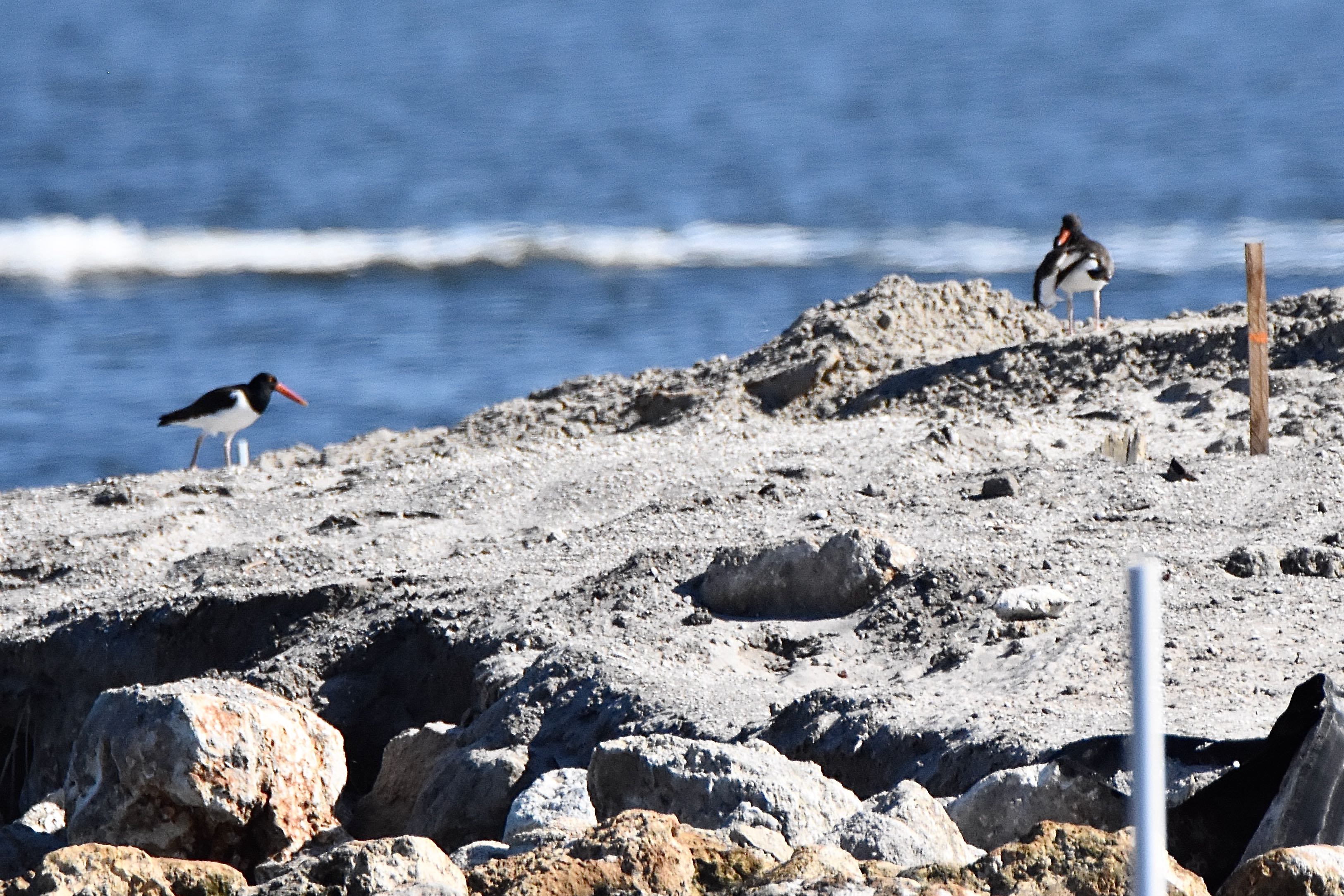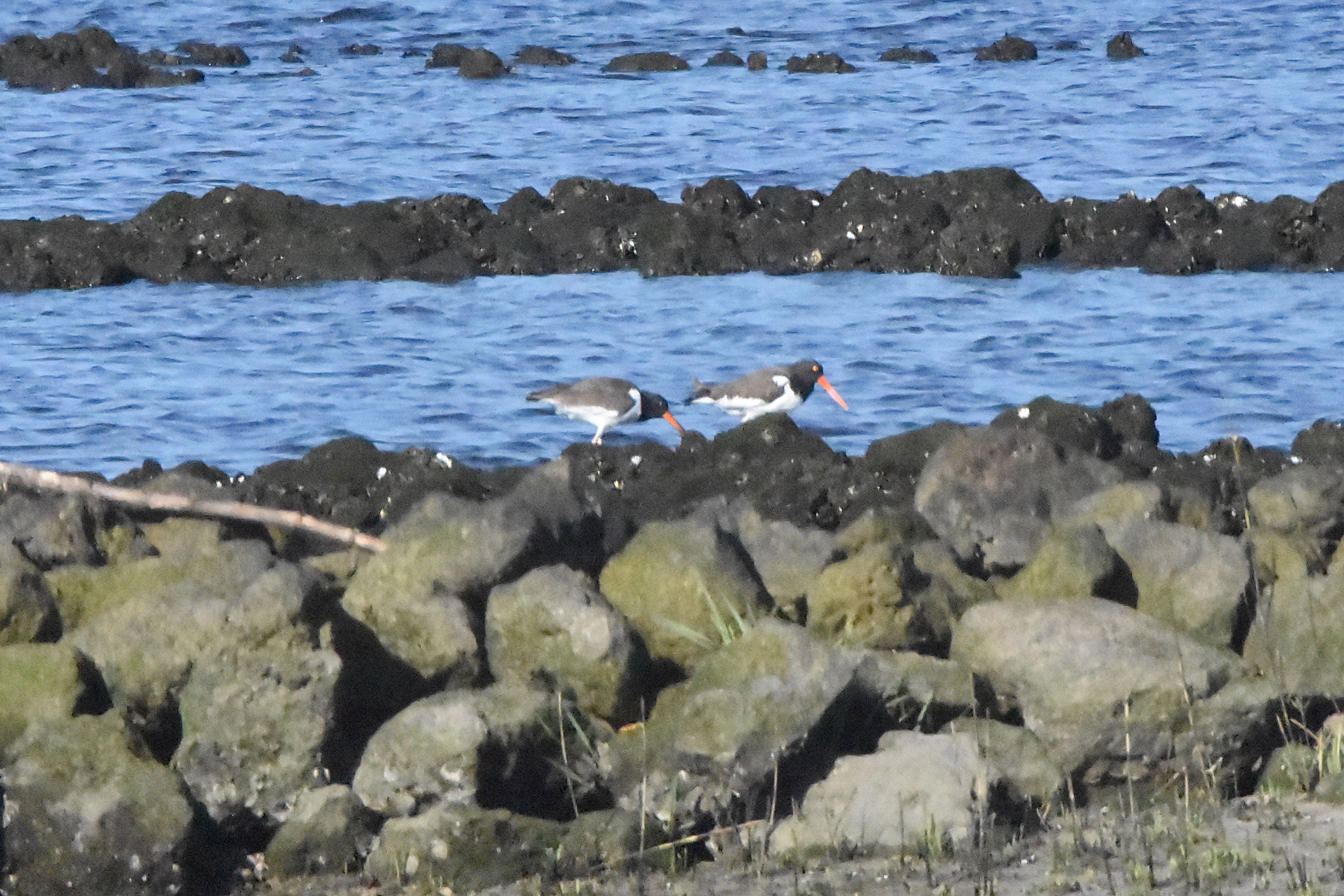
American oystercatchers, photographed at Snook Islands Natural Area, Lake Worth, Palm Beach County, in November 2017.
Unique is a frequently misused word, but when it comes to the American oystercatcher, Haematopus palliatus, it certainly applies. When it comes to looks, the oystercatcher is one of a kind among Florida’s birds.
Its black head, red-yellow eyes, straight, long red bill are unmistakeable. The black skimmer comes close, but its eyes are dark, face is white and the bill is two-toned, with the mandibles noticeably offset.
They are year-round residents of Florida, but they are rare in the southern end of the state. Lake Worth in Palm Beach County is as far south as they go in the Peninsula, regularly nesting at Snook Islands Natural Area and neighboring Bryant Park.
Oystercatchers are strictly shorebirds, rarely seen far from the coast. Their range extends along the Atlantic as far north as Massachusetts and New Hampshire and along parts of the Gulf Coast to Texas, into Mexico, Central America and northern South America. They’re found along Baja southward on the Pacific coast through Mexico and points farther south. North of New Jersey/New York, they are migratory. Florida’s year-round population of oystercatchers swells slightly in the fall and winter months.
At a distance, these birds look black and white, but only the head and neck and upper chest are black. The wings and back are brown and the undersides are white. The eyes are yellow, each each outlined with a red ring. The bill on juveniles is two-toned, black toward the tip, red-orange toward the face (see the photo above, right side). The legs are pink. They are fairly large, chunky birds, about 16 or 17 inches long.
Not surprisingly, given their name, shellfish are the mainstay of the oystercatchers’ diet. Clams, mussels and of course oysters are on the menu. They’ll also eat crabs, jellyfish, marine worms and urchins as well. They have two main methods of getting at the meat: some will jab at the shell using their bill, then cut the muscle that holds the shell closed. Others will use their bill to simply smash the shell. They learn one method or the other from parents, and that's the one they use for life.
They forage along beaches and mudflats as ebbing tides expose their prey. They hunt by sight and by probing their bill into the sand.
American oystercatchers are ground nesters, picking a spot on an isolated sandy beach in or behind the dunes where there is some vegetation. Salt marshes with sandy areas and spoil islands from dredging are also oystercatcher habitat. Nesting season in Florida runs from March into July. Oystercatchers are monogamous and some mate for life; some might form trios, with a male and two females, and may have a second nest.
The nests themselves are scrapes in the sand formed by both partners and may be lined with stones or shells. Clutches may be two to four eggs that require 24 to 28 days of incubation, a chore that both partners share. Both parents also defend their brood. Young oystercatchers leave the nest soon after hatching, and are able to swim and dive, and fledge at about five weeks. They’ll spend about a month more before striking out on their own; they are sexually mature at three or four years.
Florida considers oystercatchers to be a “species of concern” because of their restricted range and limited habitat.
American Oystercatchers are members of Haematopodidae, the oystercatcher family.
Snook Islands Natural Area
Click on photo for larger image



